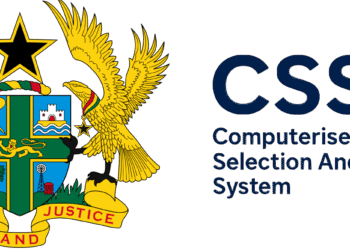Ghana’s central bank, the Bank of Ghana (BoG), may be on the verge of implementing one of its most aggressive monetary policy moves in recent history.
According to IC Research, the Monetary Policy Committee (MPC) is expected to slash the benchmark policy rate by a staggering 300 basis points (bps), bringing it down from 28% to 25%. This anticipated move follows a significant drop in inflation, which fell sharply to 13.7% in June 2025, the lowest level in years.
The sharp decline in inflation has created the necessary conditions for monetary easing. From a rate of 23.1% in early 2025, consumer inflation has dropped by nearly 10 percentage points, reaching 13.7% in June. Core inflation has also settled comfortably in the single digits, further supporting the argument for a rate cut.
“We maintain a dovish outlook for the July MPC meeting, raising our expected cut in the policy rate to at least 300bps from our initial anticipation of at least 200bps,” IC Research stated, citing improved inflation dynamics and a strengthened macroeconomic environment.
Real Policy Rate Hits Multi-Year High
One of the most compelling reasons for a deeper rate cut is the widening of the real policy rate, which jumped to 14.3% in June—a significant rise from 9.6% in May. The real policy rate measures the difference between the nominal policy rate and inflation, and a higher spread indicates a tighter monetary stance.
This elevated real interest rate has made lending conditions more restrictive, even as inflation eases. Economists argue that without a rate adjustment, the monetary environment could become overly tight, potentially stalling credit growth and economic recovery.
Despite the strong case for a 300bps rate cut, IC Research noted that the BoG may tread carefully to avoid jeopardizing foreign exchange (FX) stability and to preempt a second-round inflationary effect from a possible increase in fuel levies in the third quarter of 2025.
“We opt to stay cautious on the expected dovishness in order to consolidate FX stability and avert a second-round effect from likely higher fuel levy in 3Q2025,” the firm stated. This highlights the delicate balancing act facing the central bank—easing monetary policy without undermining hard-won economic stability.
BoG Maintained Status Quo in May 2025
At its last MPC meeting in May 2025, the BoG decided to keep the policy rate unchanged at 28%, despite calls from some analysts for a modest cut. The central bank cited the need to consolidate disinflation gains, maintain exchange rate stability, and support the ongoing fiscal consolidation process.
Governor Dr. Johnson Asiama emphasized that the bank’s decision was driven by forecasts that showed a continued easing of inflationary pressures, backed by a firm monetary policy stance and a relatively stable cedi.
Lending Rates and Yields Already Falling
In anticipation of a possible rate cut, Ghana’s financial markets have already begun adjusting. Lending rates and government bond yields have declined since the May MPC meeting, reflecting a shift in investor expectations. A cut in the policy rate would likely accelerate this trend, making credit more affordable for businesses and households.
For SMEs, a reduction in borrowing costs could be transformative—freeing up capital, enabling expansion, and boosting overall economic activity.
If the MPC moves forward with the predicted 300bps rate cut, it would mark a bold pivot toward economic growth, underpinned by inflation control and improving macroeconomic indicators. The decision would also signal a vote of confidence in Ghana’s economic trajectory, providing a much-needed boost to business sentiment and financial markets.
However, with external risks such as fuel price volatility and currency pressures still looming, the BoG must strike a careful balance between fostering growth and preserving the hard-fought stability of the last two years.
Top of Form
READ ALSO: Ghana Moves to Ban Raw Shea Nut Exports by 2026 to Boost Local Value Addition



















